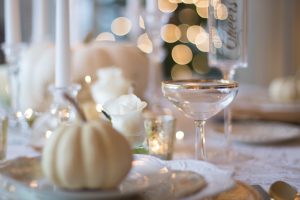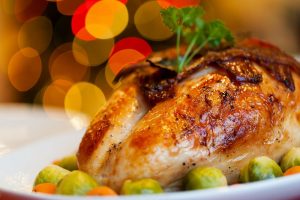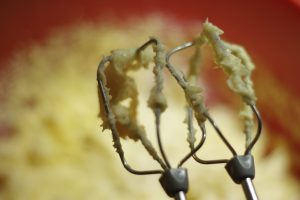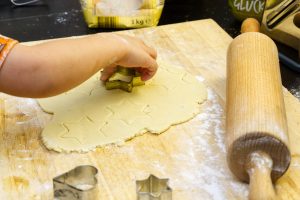 For many of us, the holidays revolve around gathering with family and friends to enjoy food, and there’s no shortage of ways to spread holiday cheer with tasty treats. As you start to gather up the ingredients you need to make your family’s holiday favorites, don’t forget the most important ingredient: food safety! Without it, you run the risk of spreading more than just good tidings and joy.
For many of us, the holidays revolve around gathering with family and friends to enjoy food, and there’s no shortage of ways to spread holiday cheer with tasty treats. As you start to gather up the ingredients you need to make your family’s holiday favorites, don’t forget the most important ingredient: food safety! Without it, you run the risk of spreading more than just good tidings and joy.
Plan Before You Party
Review these tips to help keep your kitchen and your food safe:
- Have a clear plan in place before you begin cooking or baking. Preparation is key to keeping things safe!
- Organize your pantry, refrigerator, and freezer to make sure you have enough space for all of your holiday groceries. This also helps you avoid buying ingredients twice.
- Stock up on supplies:
- Aluminum foil
- Plastic wrap
- Paper towels
- Hand and dish soap
- Check if you have separate cutting boards, serving platters, and utensils to use for raw meat and ready-to-eat foods like salads. If you don’t, plan to wash these thoroughly between uses.
- Clean and sanitize surfaces like countertops and cutting boards before and after you use them.
- If you are hosting a holiday meal, ask guests for RSVPs and for any special dietary requirements. This lets you know exactly how much food you need to prepare and allows you to plan a menu with options for everyone. For more information about safely navigating the holiday season with food allergies, please see “Holiday Food Safety: Food Allergies.”
- Determine the cooking times and temperatures so everything is done on time.
- Oven and stove top space
- Other appliances needed
- Time for each item to cook
- Have plenty of food storage containers and bags on hand so you can safely store or send guests home with leftovers.
Let’s Cook!
With preparations in hand, it’s time for the fun part: cooking and eating! Keep a working, calibrated food thermometer on hand to assure that the foods on your menu are completely cooked, tasty, and safe to eat.
The minimum safe temperature the following foods need to be cooked to are:
* 145°F: Beef, Lamb, Pork (steaks, roasts, chops and pieces); Fish and Shellfish
* 160°F: Beef, Pork, Lamb (ground); Egg dishes
* 165°F: Poultry (whole, pieces or ground); Leftovers; Casseroles
Serving Safe Food
Hot foods should be kept at an internal temperature of 140°F or warmer. Cold foods should be kept at 40°F or colder. Check these temperatures often!
- Hold perishable foods in the oven or refrigerator before serving, if space allows.
- Chafing dishes, slow cookers or warming trays can be used to keep food hot on your buffet table.
- Keep foods cold by nesting dishes in bowls of ice or use small serving dishes and replace them often.
Remember the 2-Hour Rule: Discard any perishable foods left out at room temperature for more than 2 hours, unless you have kept them safely hot or cold throughout this time!
Say No to Raw Dough
 Don’t be tempted to eat raw cookie dough or other raw batters containing eggs or flour, since both can be contaminated with Salmonella and other bacteria that can make you sick.
Don’t be tempted to eat raw cookie dough or other raw batters containing eggs or flour, since both can be contaminated with Salmonella and other bacteria that can make you sick.
- Always wash your hands and work areas with warm, soapy water after handling raw eggs and flour to help prevent Salmonella from spreading.
- For more information about egg food safety, please see “Holiday Food Safety: Safe Handling and Preparation with Eggs.”
Whether you are roasting a classic Thanksgiving turkey or decorating cookies for Santa, make food safety a part of your favorite holiday food  traditions! Read more about holiday food safety, check out “Plan Ahead for Successful Holiday Meals” and “Prepping Your Kitchen for the Holidays.”
traditions! Read more about holiday food safety, check out “Plan Ahead for Successful Holiday Meals” and “Prepping Your Kitchen for the Holidays.”


I also found this — and all your articles –informative and helpful.
I am not sure how to safely SANITIZE food prep surfaces, eg cutting boards (vs a counter top).A brief example or “such as”, aimed at household use, helps me put these great ideas into practice.
Making sure to have the extra supplies and storage containers for leftovers is a great point to remember.